Sarah L. Johnson's Blog, page 48
November 11, 2019
Six new and upcoming Austenesque reads for Janeites and historical fiction fans
Jane Austen fans, rejoice: historical novels with Austenesque themes are regaining prominence in the genre. Five to ten years ago, Pride and Prejudice retellings and sequels, and more novels inspired by her work, commanded a large presence. Others have appeared periodically since. There are hundreds of them in all, and you can find many reviewed at Austenprose, Laurel Ann Nattress's impressively detailed blog dedicated to Austen's life and works. The half-dozen selections below are all new or forthcoming, and there's been buzz about them among fans. Even within this theme, the topics are diverse, including literary sequels featuring Austen characters, a novel re-imagining her sister's life, and another featuring characters inspired by her work.
This spotlight post forms part of a blog tour for Diana Birchall's The Bride of Northanger,which follows.
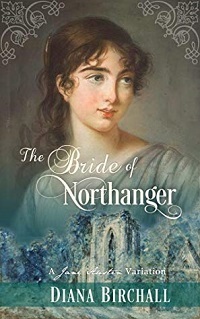
On the eve before her wedding, Catherine Morland learns from her intended, Henry Tilney, about a supposed centuries-old curse on his family. A level-headed young clergyman, Henry doesn't personally believe in curses, even though the specifics of this one appear to have materialized in recent generations. The wedding gift the Tilneys receive from his father doesn't exactly bode well, either. So begins this witty, gently satirical Gothic mystery that continues the story of Austen's Northanger Abbey in prose resembling the original. White Soup Press, Sept. 2019. [see on Goodreads]
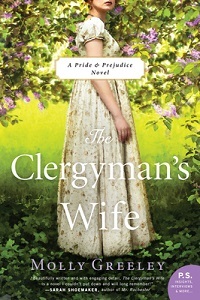
Subtitled "A Pride & Prejudice Novel," Greeley's debut novel centers on Charlotte Collins, who had married the pompous vicar Mr. Collins, and in doing so chose practicality over personal contentment. But what happens when she meets a man, a kind local farmer, who seems interested in what she has to say? William Morrow, Dec. 2019. [see on Goodreads]
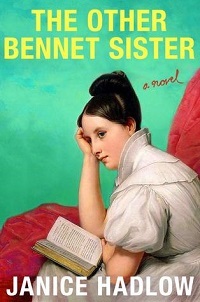
Mary Bennet, the plain, book-loving middle daughter in Pride and Prejudice, lives in the shadow of her more vibrant sisters, but here readers see her through her own eyes, examining the circumstances that shaped her and the motivations for her personal growth. Henry Holt, March 2020. [see on Goodreads]
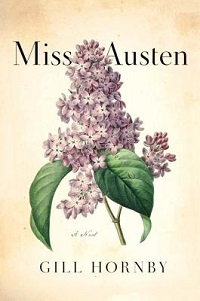
Cassandra Austen, beloved older sister and friend of Jane, is granted center stage in Hornby's novel, which depicts her as a woman in her sixties, long after Jane has passed away, and also re-creates the scenarios which caused her to destroy their faithful correspondence. What revelations did those letters contain, and what might they have told us about both Jane and Cassandra? Flatiron, April 2020. [see on Goodreads]
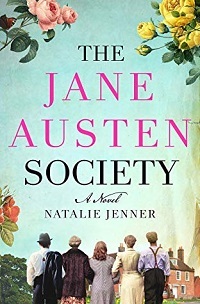
I had the opportunity to read The Jane Austen Society via Edelweiss, after seeing recommendations on social media, and loved it. Debut novelist Jenner sets her gently charming story in Chawton, the Hampshire village where Austen lived at the end of her life. In the post-WWII years, a group of individuals from various walks of life are drawn together to form a literary society to celebrate and preserve the memory of their favorite author. The cast exhibits their own Austenesque dramas, but even newcomers to Austen should enjoy this one. St. Martin's, May 2020. [see on Goodreads]
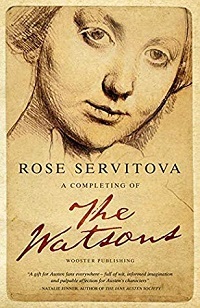
An unfinished Austen work has proven too tempting for many novelists to resist. Focusing on Emma Watson, youngest daughter of a clergyman, Irish writer Servitova begins with Austen's work and then continues her heroine's story, following with what happens after Emma leaves her wealthy aunt's home and returns to live under her father's roof. Wooster Publishing, Sept. 2019. [see on Goodreads]

Please follow along with more stops on the blog tour via Austenprose.
This spotlight post forms part of a blog tour for Diana Birchall's The Bride of Northanger,which follows.

On the eve before her wedding, Catherine Morland learns from her intended, Henry Tilney, about a supposed centuries-old curse on his family. A level-headed young clergyman, Henry doesn't personally believe in curses, even though the specifics of this one appear to have materialized in recent generations. The wedding gift the Tilneys receive from his father doesn't exactly bode well, either. So begins this witty, gently satirical Gothic mystery that continues the story of Austen's Northanger Abbey in prose resembling the original. White Soup Press, Sept. 2019. [see on Goodreads]

Subtitled "A Pride & Prejudice Novel," Greeley's debut novel centers on Charlotte Collins, who had married the pompous vicar Mr. Collins, and in doing so chose practicality over personal contentment. But what happens when she meets a man, a kind local farmer, who seems interested in what she has to say? William Morrow, Dec. 2019. [see on Goodreads]

Mary Bennet, the plain, book-loving middle daughter in Pride and Prejudice, lives in the shadow of her more vibrant sisters, but here readers see her through her own eyes, examining the circumstances that shaped her and the motivations for her personal growth. Henry Holt, March 2020. [see on Goodreads]

Cassandra Austen, beloved older sister and friend of Jane, is granted center stage in Hornby's novel, which depicts her as a woman in her sixties, long after Jane has passed away, and also re-creates the scenarios which caused her to destroy their faithful correspondence. What revelations did those letters contain, and what might they have told us about both Jane and Cassandra? Flatiron, April 2020. [see on Goodreads]

I had the opportunity to read The Jane Austen Society via Edelweiss, after seeing recommendations on social media, and loved it. Debut novelist Jenner sets her gently charming story in Chawton, the Hampshire village where Austen lived at the end of her life. In the post-WWII years, a group of individuals from various walks of life are drawn together to form a literary society to celebrate and preserve the memory of their favorite author. The cast exhibits their own Austenesque dramas, but even newcomers to Austen should enjoy this one. St. Martin's, May 2020. [see on Goodreads]

An unfinished Austen work has proven too tempting for many novelists to resist. Focusing on Emma Watson, youngest daughter of a clergyman, Irish writer Servitova begins with Austen's work and then continues her heroine's story, following with what happens after Emma leaves her wealthy aunt's home and returns to live under her father's roof. Wooster Publishing, Sept. 2019. [see on Goodreads]

Please follow along with more stops on the blog tour via Austenprose.
Published on November 11, 2019 04:30
November 5, 2019
Mrs. Everything by Jennifer Weiner, a tale of two Jewish sisters across 70 years
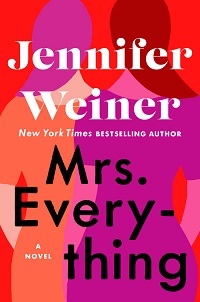 Spanning seventy years in two sisters’ lives, this is Jennifer Weiner’s first historical novel, and it’s an impressive one. As children, Jo and Bethie Kaufman feel slotted into categories: Jo the sports-loving tomboy who perplexes their rigid mother, and Bethie the pretty, well-behaved daughter. It’s 1951, and the Kaufmans have moved from multi-ethnic downtown Detroit to a “safe” Jewish neighborhood. To better assimilate, their black maid, Mae, is replaced, and with her goes Mae’s daughter, Jo’s good friend.
Spanning seventy years in two sisters’ lives, this is Jennifer Weiner’s first historical novel, and it’s an impressive one. As children, Jo and Bethie Kaufman feel slotted into categories: Jo the sports-loving tomboy who perplexes their rigid mother, and Bethie the pretty, well-behaved daughter. It’s 1951, and the Kaufmans have moved from multi-ethnic downtown Detroit to a “safe” Jewish neighborhood. To better assimilate, their black maid, Mae, is replaced, and with her goes Mae’s daughter, Jo’s good friend. Bethie and Jo’s probable paths get derailed by several awful events. Over the decades, through college at Michigan and other happenings related in richly detailed yet swiftly-paced prose, their roles turn inside out. Jo, a lesbian and social activist, finds herself a suburban mother of three, and Bethie, who loses herself in ‘60s counterculture, becomes a restless adventurer. Jo loves her children, but neither woman is content, a feeling they see about the other but can’t acknowledge in themselves. Circumstances change, but the return to happiness is complicated.
Poet Muriel Rukeyser wrote: “What would happen if one woman told the truth about her life? The world would split open.” In her introduction, Weiner says she has this quote in mind while writing, and it fits her honest, feminist approach. Through Jo and Bethie’s experiences, she shows how women support and fail one another, and how the pressure to conform to society’s expectations takes a different shape in each era. Jo and Bethie are white, but Weiner also shows how women of color had an even tougher road.
There are many seamless cultural references, from civil rights picketing to Joan Baez at Newport (and if you’re of a certain age, you may get the Jell-O jingle stuck in your head). Smart, authentic, and full of human nature’s internal truths, Mrs. Everything is more than “fiction for women”—it’s a vibrant American story.
Mrs. Everything was published by Atria this summer, and I'd read it from an Edelweiss e-copy and reviewed it for November's Historical Novels Review. You can read more about the background to the novel, including details on how Jo's character was partly inspired by her mother's life, in Weiner's interview with Parade Magazine.
Published on November 05, 2019 16:10
October 29, 2019
Seven witchy historical fiction reads for Halloween
It's October, and in Illinois this means the evenings are getting darker, the weather's getting colder, and the chilly winds are blowing the fallen leaves all over the place; in other words, it's a good time to tuck in with an atmospheric autumn read. Witches are trending in historical fiction, along with Gothic-themed novels. Within that group, novels about magical powers that descend through the female line can practically form their own subgenre. Here are seven such novels — seven being a magical number, of course — just right for the Halloween season. (One of these, the Sayers, isn't out until February, but reviewers can find it on NetGalley.)

In this multi-period historical fantasy set alternately in modern times and the past, a young woman with mysterious powers lives in near-isolation at the forest's edge, not knowing that her female ancestors still live there, unable to escape.

In a remote pocket of 19th-century New England, a young woman with supernatural gifts passed down from an accused Salem witch comes to terms with her family mansion's creepy history.
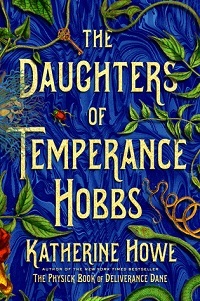
Howe's new novel, linked by characters and themes to her debut, The Physick Book of Deliverance Dane, follows her protagonist, Boston professor Connie Goodwin, as she learns more about a long line of talented women while attempting to banish a curse.
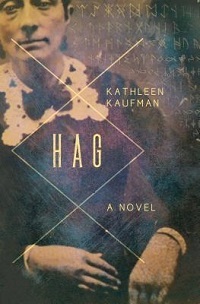
This multi-generational, magical story of the Cailleach, a local deity from ancient Scotland, and the power she instilled in her female descendants, moving forward to modern times.
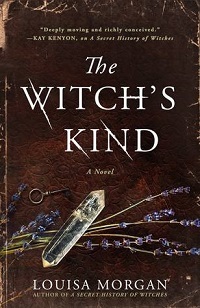
Along the Pacific Northwest coast in the 1940s, a woman and her aunt find their lives changed after an abandoned baby girl — who turns out to have a mysterious gift — is brought to them.

Beginning in Brittany in the 1820s and moving forward through the generations until WWII, Morgan tells the story of women who carve out paths in a world that would shun them, or worse, if their secrets became known.
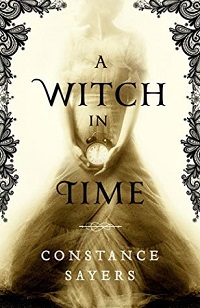
In this novel of reincarnation, love, and hereditary magic, beginning in Belle Epoque France, a young woman and her lover, a painter, get caught up in the effects of a curse that endures until the present day. Out in February 2020.

In this multi-period historical fantasy set alternately in modern times and the past, a young woman with mysterious powers lives in near-isolation at the forest's edge, not knowing that her female ancestors still live there, unable to escape.

In a remote pocket of 19th-century New England, a young woman with supernatural gifts passed down from an accused Salem witch comes to terms with her family mansion's creepy history.

Howe's new novel, linked by characters and themes to her debut, The Physick Book of Deliverance Dane, follows her protagonist, Boston professor Connie Goodwin, as she learns more about a long line of talented women while attempting to banish a curse.

This multi-generational, magical story of the Cailleach, a local deity from ancient Scotland, and the power she instilled in her female descendants, moving forward to modern times.

Along the Pacific Northwest coast in the 1940s, a woman and her aunt find their lives changed after an abandoned baby girl — who turns out to have a mysterious gift — is brought to them.

Beginning in Brittany in the 1820s and moving forward through the generations until WWII, Morgan tells the story of women who carve out paths in a world that would shun them, or worse, if their secrets became known.

In this novel of reincarnation, love, and hereditary magic, beginning in Belle Epoque France, a young woman and her lover, a painter, get caught up in the effects of a curse that endures until the present day. Out in February 2020.
Published on October 29, 2019 16:30
October 27, 2019
The Vanished Bride by Bella Ellis, a Gothic mystery-adventure with the Brontë sisters on the case
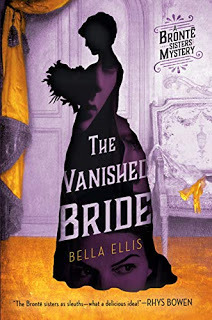 The Brontë sisters have joined the stable of historical characters appearing as sleuths. Even though – as with other famous folks cast into detective mode – I didn’t believe for a second that this could’ve happened in real life, it was entertaining to imagine “what if.”
The Brontë sisters have joined the stable of historical characters appearing as sleuths. Even though – as with other famous folks cast into detective mode – I didn’t believe for a second that this could’ve happened in real life, it was entertaining to imagine “what if.” Bella Ellis, the Brontë-esque pseudonym adopted by author Rowan Coleman, sets her series debut during the brief period that Charlotte, Emily, and Anne lived together at Haworth Parsonage, after their studies and periods of employment ended, and before they embarked upon their masterpieces.
In 1845 Yorkshire, the trio learn, via rumors heard by their troubled brother, Branwell, that a young wife and mother, Elizabeth Chester, has vanished from home – leaving behind a baby and stepchild and a blood-soaked mess in her bedchamber. The lurid details make it unlikely Mrs Chester could still be alive. Mattie French, a former classmate of Charlotte’s from their dreadful days at the Cowan School, is the Chesters’ governess, which gives the sisters the opportunity to stride across the moors (a mere two hours’ walk) to pay her a visit. They understand that, in this day and age, a woman’s life can count for very little, so they find purpose in seeking the truth.
The sisters’ fictional counterparts have the personalities one would expect: Emily the imaginative loner who adores the world’s natural wildness, Anne the careful observer with hidden depths, and Charlotte, in whose petite frame resides both intelligence and passion; she still hasn’t gotten over her unrequited attachment to her married tutor from Brussels. Their interactions with one another, and with others, are hard to look away from, so much so that poor victim Elizabeth Chester sometimes fades into the background.
In keeping with the Brontës’ themes, the plot of The Vanished Bride mixes high Gothic drama (including a creepy Elizabethan-era house, its craggily handsome, imposing master, and a forbidding housekeeper), reflective moments, and astute observations on women’s social roles in this corner of remote Yorkshire. Ellis aims her most pointed comments, though, at brother Branwell, the only Brontë son. Distraught after a broken-off affair, he drowns his sorrows at the local tavern and continues to squander his potential:
“Branwell had intelligence and wit – he had a deal of talent – and yet none of it was enough to bring him any happiness or contentment within himself. It was as if all of his life he’d been waiting for his genius to be discovered, for his talents to be lauded, without him actually having to do anything. Branwell thought of himself as destined for great things but did no great things to earn that distinction.”
Harsh, but fair – especially given how his sisters, as readers will know, will grasp every opportunity to use their own talents during the remainder of their all-too-brief lives.
The Vanished Bride was published by Berkley in September.
Published on October 27, 2019 11:30
October 24, 2019
Bits and pieces of historical fiction news: African epics, the writing biz, Australian HF, collaborative novels, and more
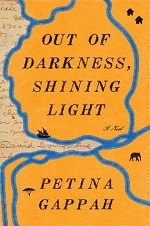 Rewriting the Historical Epic: African Women Writers Go Big. The Christian Science Monitor profiles female writers from Africa taking on "big grand historical narratives" in their fiction, including Petina Gappah (Out of Darkness, Shining Light), Jennifer Nansubuga Makumbi (Kintu), and Ayesha Harruna Attah (The Hundred Wells of Salaga). All have received considerable acclaim. Namwali Serpell's The Old Drift is another, though it's not mentioned in the article.
Rewriting the Historical Epic: African Women Writers Go Big. The Christian Science Monitor profiles female writers from Africa taking on "big grand historical narratives" in their fiction, including Petina Gappah (Out of Darkness, Shining Light), Jennifer Nansubuga Makumbi (Kintu), and Ayesha Harruna Attah (The Hundred Wells of Salaga). All have received considerable acclaim. Namwali Serpell's The Old Drift is another, though it's not mentioned in the article.I appreciate reading historical novelists' takes on the business aspects of authorship. At her blog, Susanne Dunlap, who has written for both adults and YAs, and whose latest novels are indie-published, talks about her past and current writing career: the monetary aspects, marketing, and finding a support network.
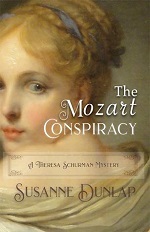 And Michelle Cameron, author of The Fruit of Her Hands, a fantastic read focusing on medieval Jewish history, and the forthcoming Beyond the Ghetto Gates, writes about the process of asking for blurbs from other authors.
And Michelle Cameron, author of The Fruit of Her Hands, a fantastic read focusing on medieval Jewish history, and the forthcoming Beyond the Ghetto Gates, writes about the process of asking for blurbs from other authors.Joffe Books recently got in touch to say they'd purchased the fiction list of long-running British publisher Robert Hale, and that they plan to work with authors to re-release their books on Kindle with new covers and editorial refreshes. I'm a longtime collector of novels from Robert Hale, which published many novels about British and European royals in decades past; they also published historical romances and sagas. Because Hale's hardcovers were aimed at libraries, many have been expensive and/or hard to find on the secondhand market. Anyone interested in getting updates can sign up for Joffe's email list.
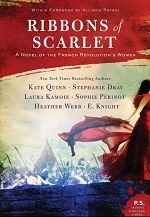 Leading up to the Historical Novel Society Australasia's latest conference, which is this coming weekend, the Sydney Morning Herald has a focus on fiction set in the past. Read more: Turning Pages: the mirror of history.
Leading up to the Historical Novel Society Australasia's latest conference, which is this coming weekend, the Sydney Morning Herald has a focus on fiction set in the past. Read more: Turning Pages: the mirror of history.Lastly, what's it like to write a collaborative novel, one smoothly stitched together from seven different viewpoints? The six authors of Ribbons of Scarlet: A Novel of the French Revolution's Women are interviewed at BookBub.
Published on October 24, 2019 15:00
October 20, 2019
The Golden Wolf by Linnea Hartsuyker concludes her epic trilogy of 9th-century Norway
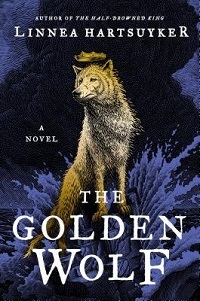 With expertly described settings spanning late-ninth-century Norway, Iceland, and the Orkney Islands, this satisfying finale to Hartsuyker’s Golden Wolf trilogy, following The Sea Queen (2018), expands into the next generation.
With expertly described settings spanning late-ninth-century Norway, Iceland, and the Orkney Islands, this satisfying finale to Hartsuyker’s Golden Wolf trilogy, following The Sea Queen (2018), expands into the next generation.After a mistake results in a man’s killing, trouble erupts, tangling Ragnvald of Sogn and his family in a lengthy conflict. With the goal of uniting Norway, Ragnvald has fought King Harald’s battles for years and feels the cost of his continued loyalty, and both have many sons seeking their own alliances and kingdoms.
Hartsuyker again displays skill at evoking the complexities of human relationships and the different facets of masculine and feminine strength. Unlike her adventurous mother, the sea-queen Svanhild, Freydis Solvisdatter is a gentle spirit. She endures hardships after a Norse warrior claims her, and Svanhild, one of Harald’s wives, faces tough choices herself. Gyda of Hordaland, Harald’s long-betrothed bride, is another intelligent, admirable woman.
The number of characters and subplots threaten to affect the novel’s cohesion initially, but Hartsuyker’s smart storytelling soon takes over as the threads overlap and come together in a fitting conclusion.
The Golden Wolf was published by Harper in August, and I'd reviewed it for Booklist in July, so this review is long overdue to appear here. I was fortunate to be sent the entire trilogy to review. The novels came out a year apart: The Half-Drowned King (2017), The Sea Queen (2018), and now this final concluding volume. All are definitely recommended; they're well balanced between male and female viewpoints and are not just for fans of historical adventure. I'd wanted to read the trilogy ever since I read about the original book deal, and I can't wait to see what subject Hartsuyker turns to next.
Published on October 20, 2019 08:12
October 13, 2019
Marley by Jon Clinch provides dark backstories for characters in Dickens' A Christmas Carol
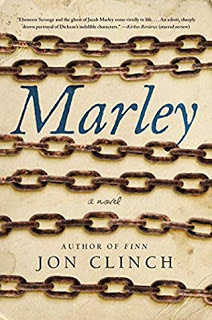 In his highly acclaimed Finn (2007), Clinch crafted a prequel to a literary classic, expanding upon its characters while adding a daring, historically relevant twist. His latest follows in grand form by developing backstories for Jacob Marley and Ebenezer Scrooge of Dickens’ A Christmas Carol.
In his highly acclaimed Finn (2007), Clinch crafted a prequel to a literary classic, expanding upon its characters while adding a daring, historically relevant twist. His latest follows in grand form by developing backstories for Jacob Marley and Ebenezer Scrooge of Dickens’ A Christmas Carol.Here, Scrooge’s miserliness is a quality that emerges from his circumstances. Marley, however, is deceit incarnate, beginning when they meet at a boys’ boarding school in 1787. Their unpleasantly codependent association continues into adulthood, when they establish a shipping company enmeshed in secrets, including trading in human cargo.
Bright but emotionally detached, Scrooge prefers working with numbers, leaving the business’s nasty aspects to Marley, but to win Belle Fairchild’s hand, Scrooge must extricate himself from the slave trade. Thus begins the pair’s all-encompassing, self-destructive rivalry.
Clinch gives us a full-fledged late-Georgian London, with its shadowy lanes and increasing commercial growth, and his female characters, namely Belle and Scrooge’s sister, Fan, are convincingly developed. This smoothly written, insightful tale should prompt people to reread its inspiration with fresh eyes.
Jon Clinch's Marley is published this month by Atria/Simon & Schuster. I reviewed it for Booklist's September 1 issue from an Edelweiss e-copy. While it's the prequel to a holiday classic, its themes (greed, slavery, family ties, the possibility of redemption) are of perennial contemporary interest.
Read also the recent NYT review of Marley, written by Simon Callow.
Also related to A Christmas Carol is Samantha Silva's Mr. Dickens and His Carol, from 2017, which stars Dickens himself and imagines the circumstances behind its writing.
Published on October 13, 2019 09:07
October 9, 2019
Thoughts on the similarities between the two Kentucky Pack Horse librarian historical novels
Regarding the Buzzfeed News article making the rounds in the historical fiction world, citing eight commonalities between two new releases: I read Jojo Moyes’ The Giver of Stars as an ARC over the summer. (My review, written for November's Historical Novels Review, is forthcoming.) I haven’t read Kim Michele Richardson’s The Book Woman of Troublesome Creek yet, though had bought a copy for my library.
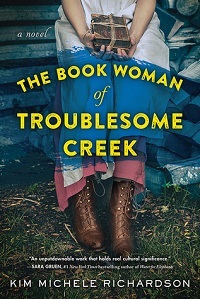 While many people on social media are calling plagiarism based on the “alarming similarities” in these two books, and the citations were written to persuade readers of this view, I’m not convinced. This is why.
While many people on social media are calling plagiarism based on the “alarming similarities” in these two books, and the citations were written to persuade readers of this view, I’m not convinced. This is why.
First, it’s not surprising at all that two authors would be publishing historical novels about the Kentucky Pack-Horse Librarians now. The articles about them in the Smithsonian Magazine , Atlas Obscura, and on NPR were circulating heavily in the past couple of years, so it was a natural topic for novelists writing about strong female characters in 20th-century settings.
Some of the cited similarities are plot devices I’d expect to see in any commercial fiction on the subject: for example, librarians getting accosted by suspicious/religious men of the hills in an isolated woodland setting. Novels need conflict, and in a situation where women are obliged to travel alone, such a character is an obvious choice as antagonist or villain. Today’s historical novelists seek to diversify their cast, and so the choice of a black librarian as a secondary character isn’t surprising either, even if it wasn’t historically documented. Both of these elements, in other words, aren't as unique as it may seem at the outset.
There’s a JSTOR article about the Pack-Horse Librarians* that mentions the Women’s Home Companion as a popular choice of reading material in these remote residences, and that child care was a popular topic in it. This is a core research resource, the top search result in Google Scholar on these librarians. This article also says that the librarians met initial resistance from some of the mountain dwellers they served. And of course if you’re looking for folksy elements to include in fiction in a rural setting, home-made quilts are a good choice. I received one as a wedding gift myself. Many of the mentioned similarities aren’t significant plot elements of The Giver of Stars, but details sprinkled in to make the novel feel authentic.
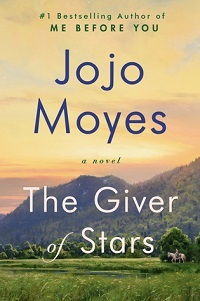 There’s always a hope for an author that they’ll be the first, or the only, novelist to write on a unique topic. The truth is that, with the strongest market for historical fiction being a narrow band of female-focused 20th-century history, there is often a race to see who can be the first novelist to lay claim to a historical personage or subject. I can understand authors getting upset when that doesn’t happen, and if they feel like they’re competing for attention with another book.
There’s always a hope for an author that they’ll be the first, or the only, novelist to write on a unique topic. The truth is that, with the strongest market for historical fiction being a narrow band of female-focused 20th-century history, there is often a race to see who can be the first novelist to lay claim to a historical personage or subject. I can understand authors getting upset when that doesn’t happen, and if they feel like they’re competing for attention with another book.
Readers interested in historical subjects appreciate having multiple perspectives, though, particularly when each author has a unique angle. Both books made it to the LibraryReads list for their respective release months; was there ever any doubt? From what I’ve read about Book Woman, the protagonists and underlying plot arcs of the two books are very different.
Both authors are experienced historical novelists, meaning that they know their genre (and its conventions) well. Both did considerable research on site, at around the same time, and likely used some of the same research material. Giving modern readers what they expect in a story about the Pack-Horse Librarians means tapping into common details and tropes, and going by the material provided, I suspect that’s what happened here.
* Boyd, Donald C., "The Book Women of Kentucky: The WPA Pack Horse Library Project." Libraries & the Cultural Record, 42(2): 2007.
 While many people on social media are calling plagiarism based on the “alarming similarities” in these two books, and the citations were written to persuade readers of this view, I’m not convinced. This is why.
While many people on social media are calling plagiarism based on the “alarming similarities” in these two books, and the citations were written to persuade readers of this view, I’m not convinced. This is why.First, it’s not surprising at all that two authors would be publishing historical novels about the Kentucky Pack-Horse Librarians now. The articles about them in the Smithsonian Magazine , Atlas Obscura, and on NPR were circulating heavily in the past couple of years, so it was a natural topic for novelists writing about strong female characters in 20th-century settings.
Some of the cited similarities are plot devices I’d expect to see in any commercial fiction on the subject: for example, librarians getting accosted by suspicious/religious men of the hills in an isolated woodland setting. Novels need conflict, and in a situation where women are obliged to travel alone, such a character is an obvious choice as antagonist or villain. Today’s historical novelists seek to diversify their cast, and so the choice of a black librarian as a secondary character isn’t surprising either, even if it wasn’t historically documented. Both of these elements, in other words, aren't as unique as it may seem at the outset.
There’s a JSTOR article about the Pack-Horse Librarians* that mentions the Women’s Home Companion as a popular choice of reading material in these remote residences, and that child care was a popular topic in it. This is a core research resource, the top search result in Google Scholar on these librarians. This article also says that the librarians met initial resistance from some of the mountain dwellers they served. And of course if you’re looking for folksy elements to include in fiction in a rural setting, home-made quilts are a good choice. I received one as a wedding gift myself. Many of the mentioned similarities aren’t significant plot elements of The Giver of Stars, but details sprinkled in to make the novel feel authentic.
 There’s always a hope for an author that they’ll be the first, or the only, novelist to write on a unique topic. The truth is that, with the strongest market for historical fiction being a narrow band of female-focused 20th-century history, there is often a race to see who can be the first novelist to lay claim to a historical personage or subject. I can understand authors getting upset when that doesn’t happen, and if they feel like they’re competing for attention with another book.
There’s always a hope for an author that they’ll be the first, or the only, novelist to write on a unique topic. The truth is that, with the strongest market for historical fiction being a narrow band of female-focused 20th-century history, there is often a race to see who can be the first novelist to lay claim to a historical personage or subject. I can understand authors getting upset when that doesn’t happen, and if they feel like they’re competing for attention with another book.Readers interested in historical subjects appreciate having multiple perspectives, though, particularly when each author has a unique angle. Both books made it to the LibraryReads list for their respective release months; was there ever any doubt? From what I’ve read about Book Woman, the protagonists and underlying plot arcs of the two books are very different.
Both authors are experienced historical novelists, meaning that they know their genre (and its conventions) well. Both did considerable research on site, at around the same time, and likely used some of the same research material. Giving modern readers what they expect in a story about the Pack-Horse Librarians means tapping into common details and tropes, and going by the material provided, I suspect that’s what happened here.
* Boyd, Donald C., "The Book Women of Kentucky: The WPA Pack Horse Library Project." Libraries & the Cultural Record, 42(2): 2007.
Published on October 09, 2019 06:00
October 7, 2019
Interview with historical novelist Susan Higginbotham, author of The First Lady and the Rebel
I'm pleased to have had the opportunity to ask Susan Higginbotham some questions about her new historical novel, The First Lady and the Rebel (Sourcebooks Landmark, Oct. 1), which delves into the complex relationship between Mary Todd Lincoln and her half-sister, Emily Todd Helm, whose husband fought for the Confederacy (as did several of Mary's half-brothers). It's a smoothly written account of a family whose political sympathies were sharply divided. As always, Susan's research is thorough and her plots well-informed by her characters' real-life actions and personalities.
The idea that Mary Lincoln had a half-sister married to a Confederate general will likely be eye-opening to many readers. Do you recall where or when you first came across this information, and then decided to write a novel about their relationship?
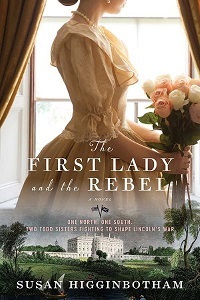 While the bare fact of Mary's divided family generally rates a few pages in biographies of the Lincolns, and most novels about Mary include Emily's visit to the White House, I think it was Stephen Berry's House of Abraham: Lincoln and the Todds, a Family Divided by War, that spurred me to learn more about Emily. Although my first few novels are set in medieval and Tudor England, my previous novel, Hanging Mary, left me with a taste to do another novel set in the 1860s, especially since the primary sources were so much more accessible and since I had moved to Maryland, within an easy drive of so many Civil War sites. (No Norman French! No Latin! No more trips to England—oh, wait a minute.)
While the bare fact of Mary's divided family generally rates a few pages in biographies of the Lincolns, and most novels about Mary include Emily's visit to the White House, I think it was Stephen Berry's House of Abraham: Lincoln and the Todds, a Family Divided by War, that spurred me to learn more about Emily. Although my first few novels are set in medieval and Tudor England, my previous novel, Hanging Mary, left me with a taste to do another novel set in the 1860s, especially since the primary sources were so much more accessible and since I had moved to Maryland, within an easy drive of so many Civil War sites. (No Norman French! No Latin! No more trips to England—oh, wait a minute.)
I've been fascinated by the Lincolns since I was a child, and it occurred to me that Mary's relationships with her siblings, especially the half-siblings who supported the Confederacy, was a topic that had been ignored in historical fiction. Since I like to write about actual historical figures, but like to take a fresh approach to their stories, the idea was a good fit.
Since Mary and Emily were born 18 years apart, did this create any initial writing challenges, in terms of plotting and structure?
It made for an awfully long first chapter! Originally, I had planned on a couple of more Mary chapters, including her time in Washington during Lincoln's term in Congress, before I introduced Emily, but after a couple of false starts and some stagnation I decided to fast forward through the early years of the Lincoln marriage and move on to Emily's story, which turned out to be the momentum I needed.
I appreciate how you do considerable research using primary sources. What were some of the more important or interesting discoveries you made using archival documents or photos?
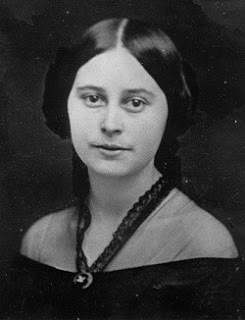 Emily Todd HelmMany students of women's history during the Civil War have heard of Phoebe Yates Pember, who wrote a memoir of her service as matron of Richmond's Chimborazo Hospital, but I don't think any historian has noted her connection with Emily Todd Helm. It wasn't something I noticed myself until I was scrolling through my scans of Emily's papers at the Kentucky Historical Society and saw a faded letter signed "Phoebe Y. Pember." To my surprise, I learned from reading the letter that not only did the women know each other, but Emily stayed in Phoebe's rather contentious household in Marietta, Georgia, at some point before Phoebe decamped for Richmond. Having learned that, I couldn't miss the opportunity to give the sharp-tongued and sharp-witted Phoebe a cameo appearance in my novel.
Emily Todd HelmMany students of women's history during the Civil War have heard of Phoebe Yates Pember, who wrote a memoir of her service as matron of Richmond's Chimborazo Hospital, but I don't think any historian has noted her connection with Emily Todd Helm. It wasn't something I noticed myself until I was scrolling through my scans of Emily's papers at the Kentucky Historical Society and saw a faded letter signed "Phoebe Y. Pember." To my surprise, I learned from reading the letter that not only did the women know each other, but Emily stayed in Phoebe's rather contentious household in Marietta, Georgia, at some point before Phoebe decamped for Richmond. Having learned that, I couldn't miss the opportunity to give the sharp-tongued and sharp-witted Phoebe a cameo appearance in my novel.
One discovery I made, however, was entirely by accident. A researcher in Madison, Indiana, where Emily lived after the war, wrote a pamphlet about Emily, and when my copy arrived I found that included with it was a photocopy of a typewritten transcription of a letter Emily wrote to Frank McCawley after his brother, George "Mac" McCawley, who had been one of Benjamin Hardin Helm's staff officers, was killed in battle. It's a very raw, emotional letter in which Emily dwells on her own loss in Mac's death rather than the McCawley family's, and I came away from it convinced that had Mac survived the war, Emily might well have married him after a respectable interval. At the very least, the letter—preserved by the McCawley descendants in a family Bible—was evidence of the strong friendship between Mac and Emily, and gave Emily a confidant at certain points in the novel.
As you mention in the notes at the end, Lincoln's life has been very well documented, but I particularly enjoyed seeing his home and family life depicted on the page in The First Lady and the Rebel. Were there any lesser-known qualities about Lincoln that you especially wanted to bring to life?
I did enjoy throwing some of my favorite stories about Lincoln into the novel—like the incident where he was so lost in thought he failed to notice that the child whose wagon he was pulling had fallen out of the wagon—but what I was striving for more than anything was to show the Lincoln marriage as a loving one, albeit one with its ups and downs (like most marriages). Even some historians, often relying on secondhand and even third-hand accounts, have fallen into the trap of painting the marriage as an unrelievedly miserable one, with Mary inflicting most of the misery.
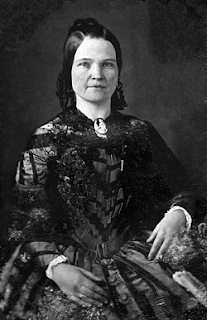 Mary Todd LincolnI found it difficult to write Lincoln, as he is a hero of mine, so I hope readers find a few flaws in him. As for Mary, there are so many black-or-white portrayals of her, even in nonfiction—she's either the termagant who made Lincoln's life a living hell before she went crazy, or she's a proto-feminist without whom Lincoln would have been nothing and who was shoved into a lunatic asylum by her greedy, ungrateful son after she proved an embarrassment to him.
Mary Todd LincolnI found it difficult to write Lincoln, as he is a hero of mine, so I hope readers find a few flaws in him. As for Mary, there are so many black-or-white portrayals of her, even in nonfiction—she's either the termagant who made Lincoln's life a living hell before she went crazy, or she's a proto-feminist without whom Lincoln would have been nothing and who was shoved into a lunatic asylum by her greedy, ungrateful son after she proved an embarrassment to him.
She's a complex, fascinating woman who fell in between those extremes, and I wanted to present a more balanced view of her. (That being said, she could throw a spectacular hissy fit when she chose to—I actually cut some of the scene at City Point, because the editor thought it went on too long. Imagine what it must have been like to live it!)
What appeals to you about writing historical fiction about people who once lived? Are there qualities you look for in deciding which historical characters to write about?
Well, for one thing, with historical figures, there's a ready-made plot—which comes in handy for someone like me who prefers drawing characters to creating plots. For another, I really enjoy the research that comes with writing about a historical figure. And it's a pleasure introducing readers to the little-known aspects of a prominent historical figure or to a famous person's lesser-known friends or relatives.
In choosing characters to write about, I gravitate toward women who have been misunderstood by history or overlooked by history. I'm drawn to strong women, but to quiet strength, not to the showy type displayed by the "kick-ass heroine." Resilience is a quality I particularly value, which might explain why so many of my female characters, who as a group have terrible luck in keeping their husbands alive, are called upon to exercise it to such a large degree.
Thanks so much, Susan!

About the Author
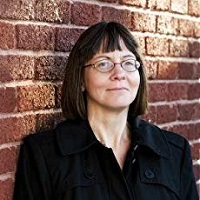
Susan Higginbotham is the author of seven historical novels, including Hanging Mary, The Stolen Crown, and The Queen of Last Hopes. The Traitor’s Wife, her first novel, was the winner of ForeWord Magazine’s 2005 Silver Award for historical fiction and was a Gold Medalist, Historical/Military Fiction, 2008 Independent Publisher Book wards. She writes her own historical fiction blog, History Refreshed. Higginbotham has worked as an editor and an attorney, and lives in Maryland with her family.
Giveaway
During the Blog Tour, we are giving away a paperback copy of The First Lady and the Rebel! To enter, please use the Gleam form below.
Giveaway Rules
– Giveaway ends at 11:59 pm EST on October 15th. You must be 18 or older to enter.
– Paperback giveaway is open to the US only.
– Only one entry per household.
– All giveaway entrants agree to be honest and not cheat the systems; any suspicion of fraud will be decided upon by blog/site owner and the sponsor, and entrants may be disqualified at our discretion.
– The winner has 48 hours to claim prize or a new winner is chosen.
The First Lady and the Rebel
The idea that Mary Lincoln had a half-sister married to a Confederate general will likely be eye-opening to many readers. Do you recall where or when you first came across this information, and then decided to write a novel about their relationship?
 While the bare fact of Mary's divided family generally rates a few pages in biographies of the Lincolns, and most novels about Mary include Emily's visit to the White House, I think it was Stephen Berry's House of Abraham: Lincoln and the Todds, a Family Divided by War, that spurred me to learn more about Emily. Although my first few novels are set in medieval and Tudor England, my previous novel, Hanging Mary, left me with a taste to do another novel set in the 1860s, especially since the primary sources were so much more accessible and since I had moved to Maryland, within an easy drive of so many Civil War sites. (No Norman French! No Latin! No more trips to England—oh, wait a minute.)
While the bare fact of Mary's divided family generally rates a few pages in biographies of the Lincolns, and most novels about Mary include Emily's visit to the White House, I think it was Stephen Berry's House of Abraham: Lincoln and the Todds, a Family Divided by War, that spurred me to learn more about Emily. Although my first few novels are set in medieval and Tudor England, my previous novel, Hanging Mary, left me with a taste to do another novel set in the 1860s, especially since the primary sources were so much more accessible and since I had moved to Maryland, within an easy drive of so many Civil War sites. (No Norman French! No Latin! No more trips to England—oh, wait a minute.)I've been fascinated by the Lincolns since I was a child, and it occurred to me that Mary's relationships with her siblings, especially the half-siblings who supported the Confederacy, was a topic that had been ignored in historical fiction. Since I like to write about actual historical figures, but like to take a fresh approach to their stories, the idea was a good fit.
Since Mary and Emily were born 18 years apart, did this create any initial writing challenges, in terms of plotting and structure?
It made for an awfully long first chapter! Originally, I had planned on a couple of more Mary chapters, including her time in Washington during Lincoln's term in Congress, before I introduced Emily, but after a couple of false starts and some stagnation I decided to fast forward through the early years of the Lincoln marriage and move on to Emily's story, which turned out to be the momentum I needed.
I appreciate how you do considerable research using primary sources. What were some of the more important or interesting discoveries you made using archival documents or photos?
 Emily Todd HelmMany students of women's history during the Civil War have heard of Phoebe Yates Pember, who wrote a memoir of her service as matron of Richmond's Chimborazo Hospital, but I don't think any historian has noted her connection with Emily Todd Helm. It wasn't something I noticed myself until I was scrolling through my scans of Emily's papers at the Kentucky Historical Society and saw a faded letter signed "Phoebe Y. Pember." To my surprise, I learned from reading the letter that not only did the women know each other, but Emily stayed in Phoebe's rather contentious household in Marietta, Georgia, at some point before Phoebe decamped for Richmond. Having learned that, I couldn't miss the opportunity to give the sharp-tongued and sharp-witted Phoebe a cameo appearance in my novel.
Emily Todd HelmMany students of women's history during the Civil War have heard of Phoebe Yates Pember, who wrote a memoir of her service as matron of Richmond's Chimborazo Hospital, but I don't think any historian has noted her connection with Emily Todd Helm. It wasn't something I noticed myself until I was scrolling through my scans of Emily's papers at the Kentucky Historical Society and saw a faded letter signed "Phoebe Y. Pember." To my surprise, I learned from reading the letter that not only did the women know each other, but Emily stayed in Phoebe's rather contentious household in Marietta, Georgia, at some point before Phoebe decamped for Richmond. Having learned that, I couldn't miss the opportunity to give the sharp-tongued and sharp-witted Phoebe a cameo appearance in my novel.One discovery I made, however, was entirely by accident. A researcher in Madison, Indiana, where Emily lived after the war, wrote a pamphlet about Emily, and when my copy arrived I found that included with it was a photocopy of a typewritten transcription of a letter Emily wrote to Frank McCawley after his brother, George "Mac" McCawley, who had been one of Benjamin Hardin Helm's staff officers, was killed in battle. It's a very raw, emotional letter in which Emily dwells on her own loss in Mac's death rather than the McCawley family's, and I came away from it convinced that had Mac survived the war, Emily might well have married him after a respectable interval. At the very least, the letter—preserved by the McCawley descendants in a family Bible—was evidence of the strong friendship between Mac and Emily, and gave Emily a confidant at certain points in the novel.
As you mention in the notes at the end, Lincoln's life has been very well documented, but I particularly enjoyed seeing his home and family life depicted on the page in The First Lady and the Rebel. Were there any lesser-known qualities about Lincoln that you especially wanted to bring to life?
I did enjoy throwing some of my favorite stories about Lincoln into the novel—like the incident where he was so lost in thought he failed to notice that the child whose wagon he was pulling had fallen out of the wagon—but what I was striving for more than anything was to show the Lincoln marriage as a loving one, albeit one with its ups and downs (like most marriages). Even some historians, often relying on secondhand and even third-hand accounts, have fallen into the trap of painting the marriage as an unrelievedly miserable one, with Mary inflicting most of the misery.
 Mary Todd LincolnI found it difficult to write Lincoln, as he is a hero of mine, so I hope readers find a few flaws in him. As for Mary, there are so many black-or-white portrayals of her, even in nonfiction—she's either the termagant who made Lincoln's life a living hell before she went crazy, or she's a proto-feminist without whom Lincoln would have been nothing and who was shoved into a lunatic asylum by her greedy, ungrateful son after she proved an embarrassment to him.
Mary Todd LincolnI found it difficult to write Lincoln, as he is a hero of mine, so I hope readers find a few flaws in him. As for Mary, there are so many black-or-white portrayals of her, even in nonfiction—she's either the termagant who made Lincoln's life a living hell before she went crazy, or she's a proto-feminist without whom Lincoln would have been nothing and who was shoved into a lunatic asylum by her greedy, ungrateful son after she proved an embarrassment to him.She's a complex, fascinating woman who fell in between those extremes, and I wanted to present a more balanced view of her. (That being said, she could throw a spectacular hissy fit when she chose to—I actually cut some of the scene at City Point, because the editor thought it went on too long. Imagine what it must have been like to live it!)
What appeals to you about writing historical fiction about people who once lived? Are there qualities you look for in deciding which historical characters to write about?
Well, for one thing, with historical figures, there's a ready-made plot—which comes in handy for someone like me who prefers drawing characters to creating plots. For another, I really enjoy the research that comes with writing about a historical figure. And it's a pleasure introducing readers to the little-known aspects of a prominent historical figure or to a famous person's lesser-known friends or relatives.
In choosing characters to write about, I gravitate toward women who have been misunderstood by history or overlooked by history. I'm drawn to strong women, but to quiet strength, not to the showy type displayed by the "kick-ass heroine." Resilience is a quality I particularly value, which might explain why so many of my female characters, who as a group have terrible luck in keeping their husbands alive, are called upon to exercise it to such a large degree.
Thanks so much, Susan!

About the Author

Susan Higginbotham is the author of seven historical novels, including Hanging Mary, The Stolen Crown, and The Queen of Last Hopes. The Traitor’s Wife, her first novel, was the winner of ForeWord Magazine’s 2005 Silver Award for historical fiction and was a Gold Medalist, Historical/Military Fiction, 2008 Independent Publisher Book wards. She writes her own historical fiction blog, History Refreshed. Higginbotham has worked as an editor and an attorney, and lives in Maryland with her family.
Giveaway
During the Blog Tour, we are giving away a paperback copy of The First Lady and the Rebel! To enter, please use the Gleam form below.
Giveaway Rules
– Giveaway ends at 11:59 pm EST on October 15th. You must be 18 or older to enter.
– Paperback giveaway is open to the US only.
– Only one entry per household.
– All giveaway entrants agree to be honest and not cheat the systems; any suspicion of fraud will be decided upon by blog/site owner and the sponsor, and entrants may be disqualified at our discretion.
– The winner has 48 hours to claim prize or a new winner is chosen.
The First Lady and the Rebel
Published on October 07, 2019 04:35
September 30, 2019
Thoughts on Philippa Gregory's new saga of 17th-century England, Tidelands
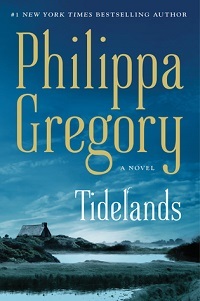 Enthusiasts of Philippa Gregory’s Tudor novels may call her latest a departure, but the atmospheric Tidelands is more of a return to her former style and era. As in her Tradescant novels, she sets her tale in the 17th century, during England’s Civil War, and while her focus remains on the lives of women, it's shifted to ordinary working-class folk. There’s a strong thread of royal intrigue, but one (mostly) seen from a distant viewpoint. After reading the critical Entertainment Weekly review and the reasoning there, I guessed that Tidelands would suit my tastes, and it did. In fact, I enjoyed it more than any of her novels since The Other Boleyn Girl.
Enthusiasts of Philippa Gregory’s Tudor novels may call her latest a departure, but the atmospheric Tidelands is more of a return to her former style and era. As in her Tradescant novels, she sets her tale in the 17th century, during England’s Civil War, and while her focus remains on the lives of women, it's shifted to ordinary working-class folk. There’s a strong thread of royal intrigue, but one (mostly) seen from a distant viewpoint. After reading the critical Entertainment Weekly review and the reasoning there, I guessed that Tidelands would suit my tastes, and it did. In fact, I enjoyed it more than any of her novels since The Other Boleyn Girl. Gregory obviously loves her setting – the “neither land nor sea” marshy regions of Sealsea Island, off the Sussex mainland – and lingers over descriptions while her heroine, Alinor Reekie, navigates her way through the hidden traps in its sands and tides. Twenty-seven-year-old Alinor, healer and midwife and sister of the local ferryman, is among the poorest residents of her tiny coastal community. Her husband has vanished, leaving her with two children moving into adolescence.
She ekes out a living as best she can, hewing to a straight, narrow path even as her neighbors hint she must have mystical powers. Her greatest treasures, besides her son and daughter, are the remnants of old Saxon coins she finds on the beach. Early on, Alinor reflects on having the “sight,” as her female ancestors did before her, but Gregory doesn’t make much use of this supposed ability: Alinor’s not Jacquetta or Elizabeth Woodville.
Alinor’s life takes a sharp turn when she encounters James, a traveling priest in disguise, late on Midsummer Eve and guides him across the tidelands to the home of the local lord, a known royalist supporter. Through the intertwining stories of Alinor and James, Gregory shows how the political divide reaches out to affect even isolated Sealsea Island. James grows entranced by Alinor’s beauty and kindness, marveling at having found “a woman like you, in a place like this.”
Different meanings of this phrase echo throughout. Gregory’s tendency to repeat bits of dialogue for emphasis can sometimes aggravate, but here it works well. Alinor and James fall in love, of course, though there are hints that, even with his expensive clothes and greater education, she’s of stronger moral fiber than he.
Tidelands is indeed more of a “slow burn” than an epic read full of juicy excitement. That said, Alinor’s character is richly developed, with many subtle shadings. Because her meager income depends on others’ goodwill, she can rarely act on her desires. James’s presence throws her into disarray, but she can’t let it show. With her inner turmoil, I found her among the most complex and intriguing among Gregory’s heroines. When Alinor’s covert act to help James is rewarded, and her children’s fortunes improve, her neighbors’ whispers about her increase. Meanwhile, James, forced to conceal himself among Parliamentarians, continues his secret, dangerous mission for his king.
The way Gregory handles her “abortion subplot” goes contrary to what one might expect of the people involved, and I found this puzzling. But otherwise, Alinor’s character falls in with her status as an impoverished woman all too aware that she sits on the margins. As such, she possesses a strength imperative for survival, one which her social superiors hardly recognize. When a higher-ranking man, speaking of the political chaos engulfing Britain, calls it a fight “between men… It was about our country, our war,” Alinor's reply has a quiet, firm insistence on her place in the world: “‘My war, too,’ she observed. ‘My country, too.’”
Tidelands was published by Atria/Simon & Schuster in August; I read it from an Edelweiss copy (and also bought a print copy for the library's bestseller collection).
Published on September 30, 2019 06:09



